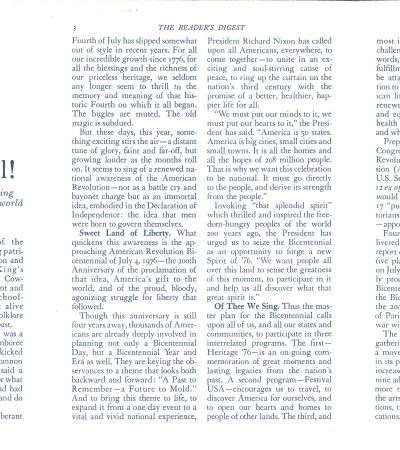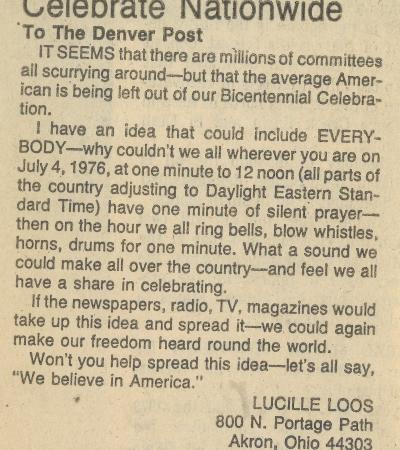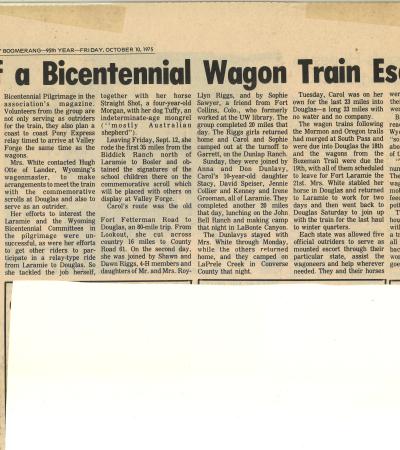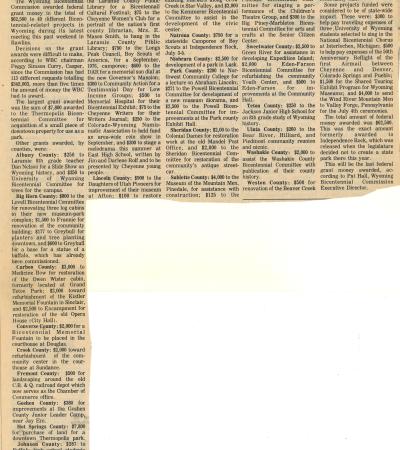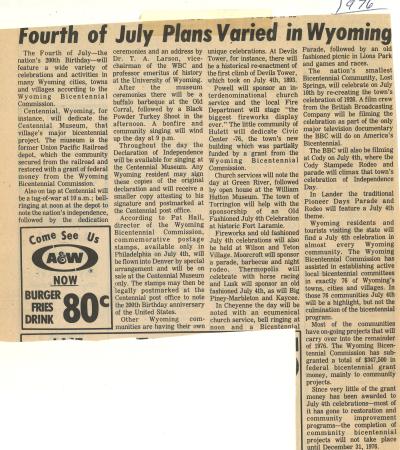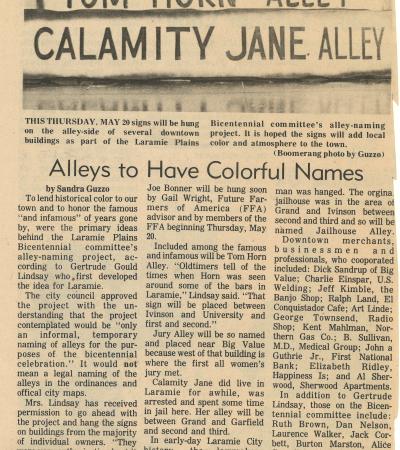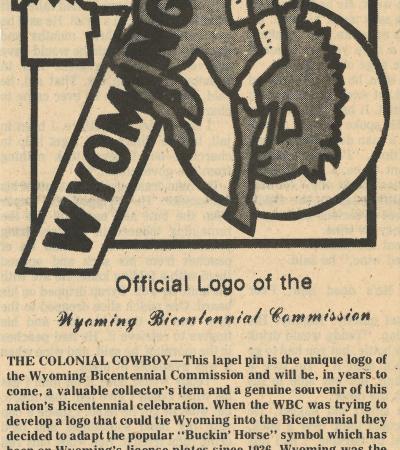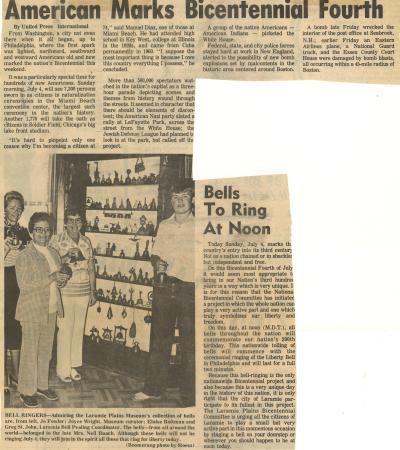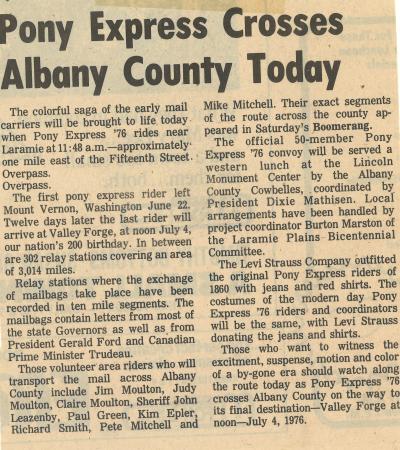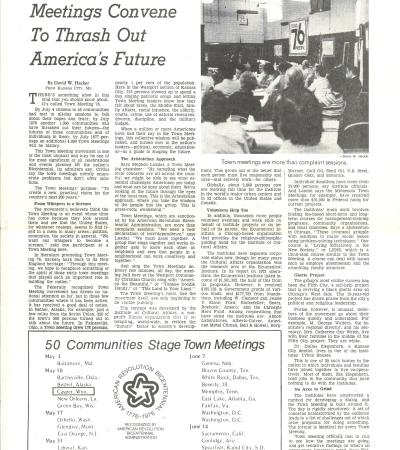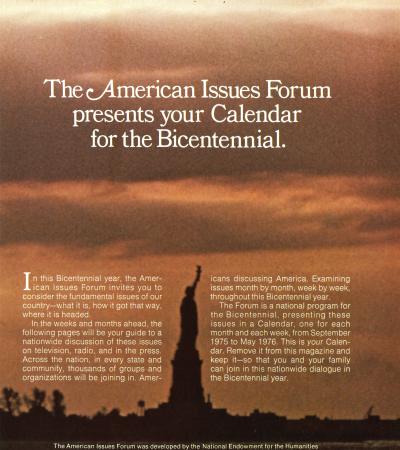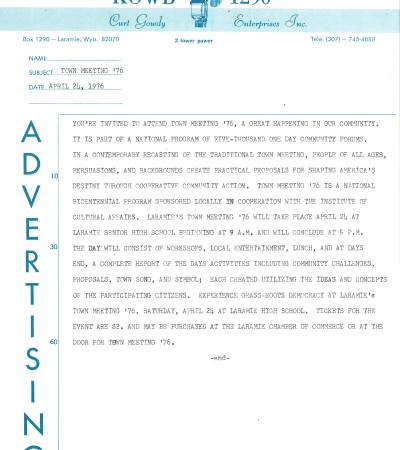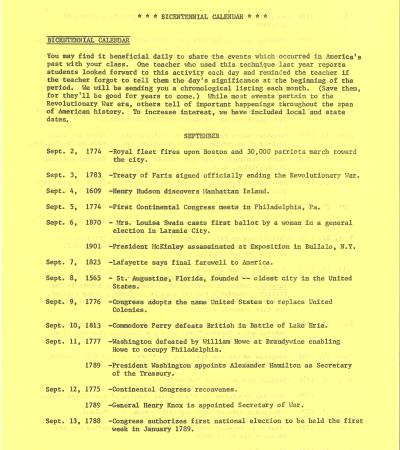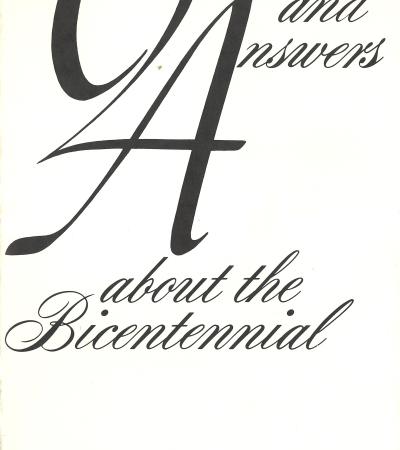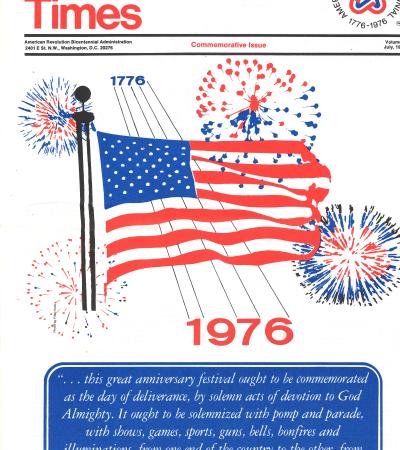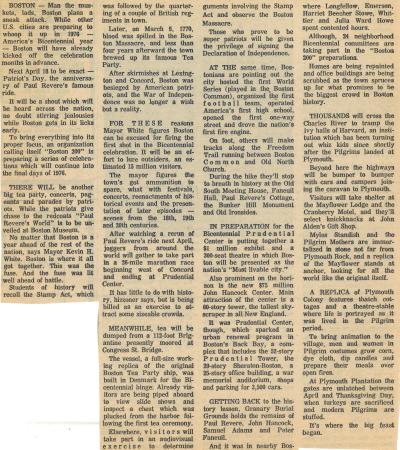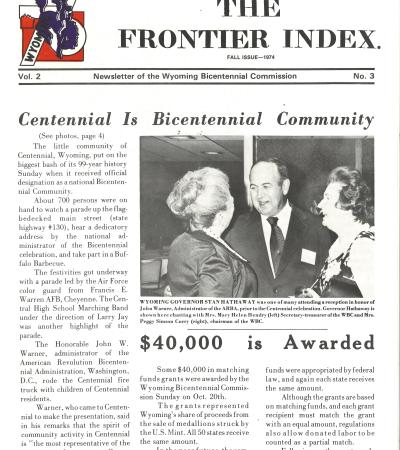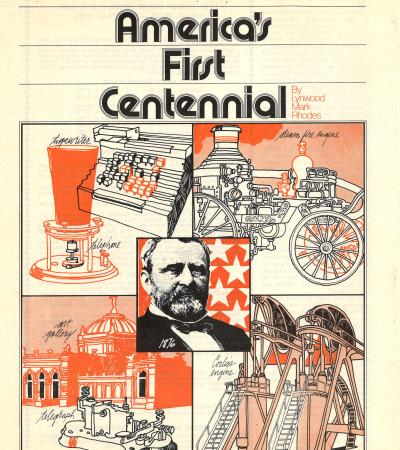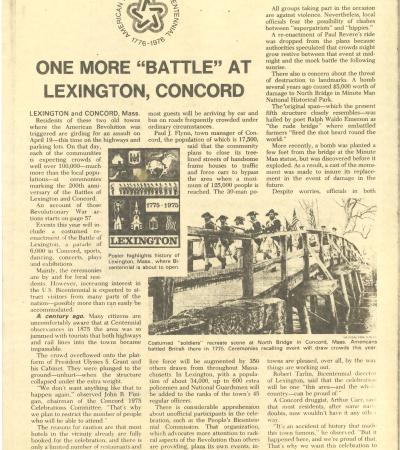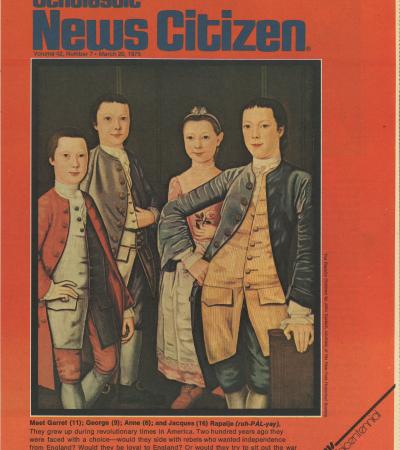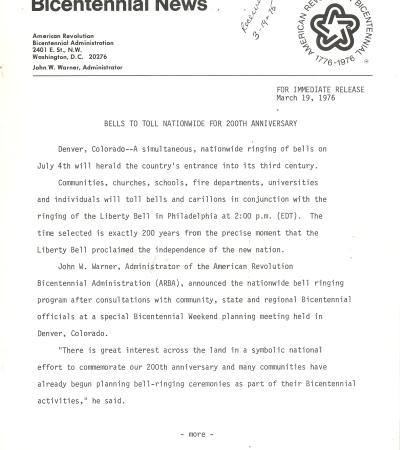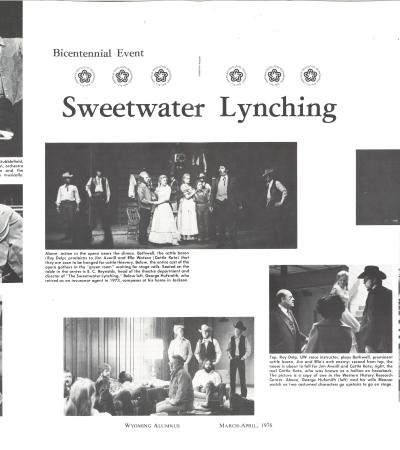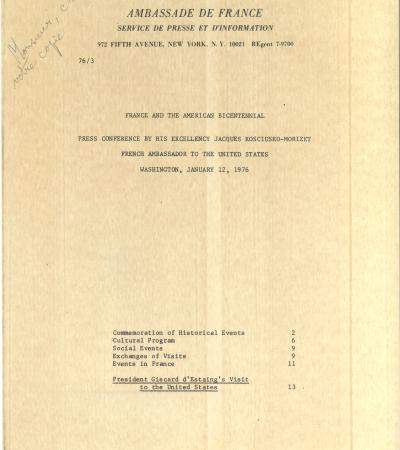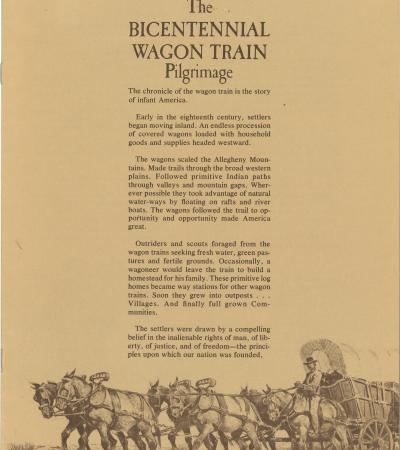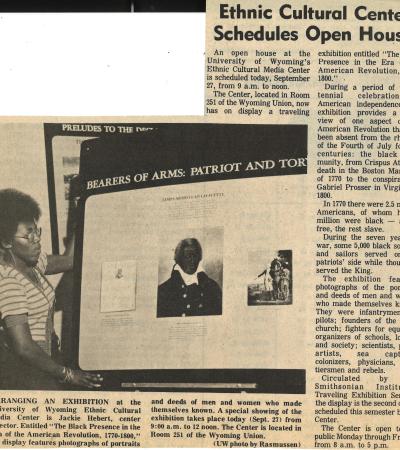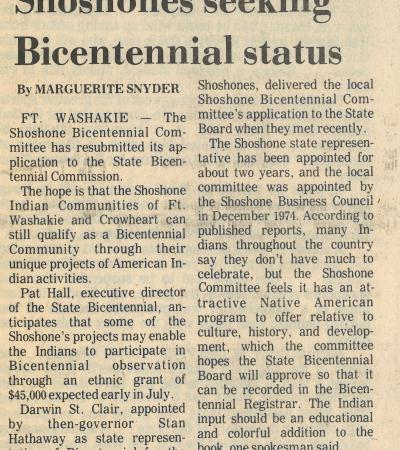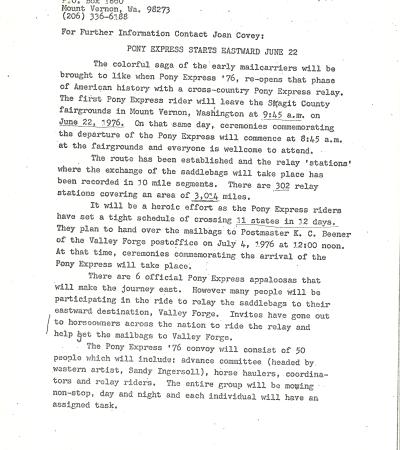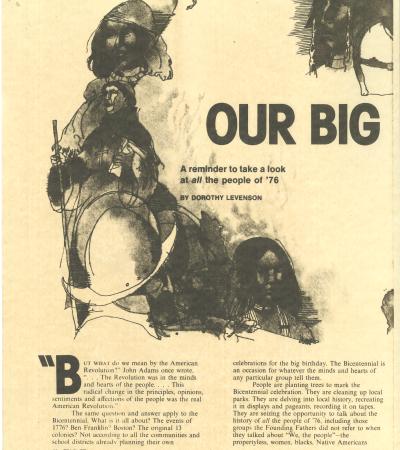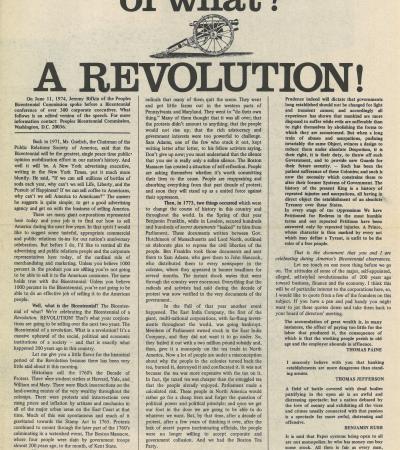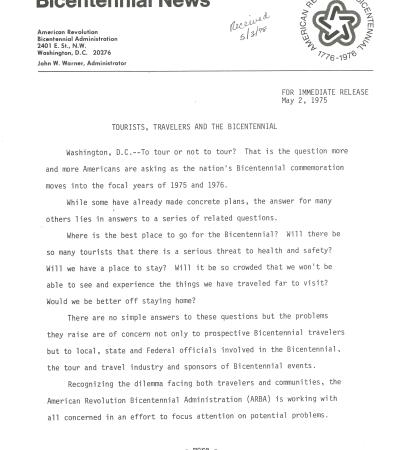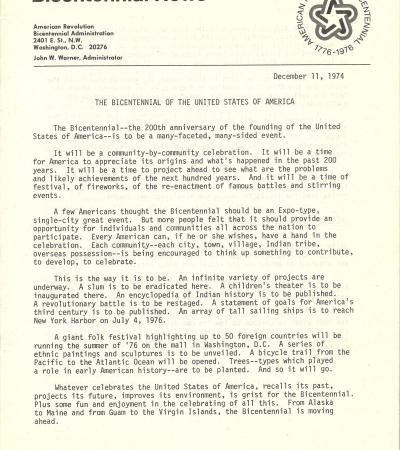Laramie junior high school teacher Dan Nelson incorporated the Bicentennial celebration into his teaching lessons and was involved with local planning of celebrations, and collected extensive memorabilia documenting how Wyoming and America commemorated 1976. The collection includes commemorative items and souvenirs, educational materials and curriculum files with student-generated Bicentennial projects and contest materials, correspondence and planning documents, newspaper clippings and periodicals, tourism brochures and popular culture magazines, merchandise catalogs, and Laramie-specific Bicentennial materials.
"Ring Out, Liberty Bell!" by Robert O'Brien, Reader's Digest, July 1972
This article describes the excitement and planning behind the U.S. Bicentennial in 1976, encouraging Americans to honor their history and work toward a better future. It describes how communities across the nation are creating meaningful projects that reflect their pride in America and hopes for progress in areas like education, health, and equality.
Letter to the Editor of the Denver Post by Lucille Loos
This letter proposes a nationwide minute of prayer followed by bell ringing, horn honking, whistle blowing & drum banging on July 4, 1976, so that all Americans could participate in the Bicentennial.
"Saga of a Bicentennial Wagon Train Escort" by Beryl Anderson, Laramie Daily Boomerang, October 10, 1975
This article describes a Bicentennial wagon train pilgrimage that passed through Wyoming on its way to Valley Forge, Pennsylvania and some of the the horseback riders that accompanied it.
"Bicentennial Commission Awards Funds for Projects", April 29, 1976
This article details the various Wyoming Bicentennial projects that were awarded federal grant money through the Wyoming Bicentennial Commission.
"Fourth of July Plans Varied in Wyoming", 1976
This article describes some of the Bicentennial-related celebrations and activities planned for July 4, 1976 across Wyoming.
"Bicentennial Plans Progress" by Ruth Brown, Laramie Daily Boomerang, April 4, 1975
This article covers various projects planned for Laramie in 1975 and 1976 associated with the Bicentennial.
Photograph of Laramie Junior High students, Laramie Daily Boomerang, February 5, 1977
In this photo, eighth-grade students reenact the signing of the Declaration of Independence as part of Bicentennial-related activities in Laramie.
"Alleys to Have Colorful Names" by Sandra Guzzo, Laramie Daily Boomerang, May 19, 1976
This article covers a Laramie Bicentennial project to name some of Laramie's alleys after famous and infamous historical figures.
"The Spirit of '76 In the American West", Laramie Daily Boomerang, June 2, 1976
This article describes a new logo developed by the Wyoming Bicentennial Commission. It adapts the Wyoming bucking horse symbol, and includes a stylized representation of the Grand Tetons.
"American Marks Bicentennial Fourth", Laramie Daily Boomerang, July 4, 1976
This article describes July 4, 1976 festivities in Washington D.C. as well as naturalization ceremonies in Miami Beach and Chicago. It also covers the nationwide bell ringing to commemorate the Bicentennial.
"Pony Express Crosses Albany County Today", Laramie Daily Boomerang, June 27, 1976
This article details the plans for reenacting a Bicentennial-related Pony Express ride, which will include volunteer riders who will transport mail across Albany County.
"Bicentennial Town Meetings Convene To Thrash Out America's Future" by David W. Hacker, The National Observer, August 2, 1975
This article explains how people in over 5,000 U.S. communities, including towns in Wyoming, planned to gather in "Bicentennial Town Meetings" to share their ideas and concerns about the future of the country. These meetings encouraged everyday citizens to help shape America’s future by coming together to talk about issues important to them.
Laramie Town Meeting Booklet, April 24, 1976
This document was prepared as part of the Laramie Bicentennial Town Meeting project. It describes economic, political and cultural challenges facing Laramie in 1976 as well as proposals to address those challenges.
The American Issues Forum Calendar for the Bicentennial
This publication, developed by the National Endowment for the Humanities for the Bicentennial, provides a calendar of topics intended to guide a nationwide discussion on television, radio, and in the press. Topics covered range from unalienable rights to growing up in America.
Town Meeting'76 Radio Script
This script was broadcast on Laramie's KOWB radio station before the April 24, 1976 Bicentennial Laramie Town Meeting.
Letter from Dan Nelson to Laramie elementary school parents, April 20, 1976
The letter advertising the 1976 Bicentennial Laramie Town Meeting was distributed to all Laramie elementary school students.
Albany County Monthly Bicentennial Calendar
This Bicentennial calendar lists historical happenings for each day of the month for the academic year. It was distributed to all Albany County public school teachers and designed for them to share historical facts with their students.
Questions and Answers About the Bicentennial
This brochure, distributed by the American Revolution Bicentennial Administration, answers frequently asked questions about the Bicentennial.
Bicentennial Times Commemorative Issue, July, 1976
This newspaper was published by the American Revolution Bicentennial Administration.
"Boston Plans Head Start for Bicentennial" by Jerry Hulse, September 8, 1974
This article describes various historically related activities occurring in Boston in the lead up to the Bicentennial.
"The Frontier Index", Fall 1974
This newsletter published by the Wyoming Bicentennial Commission highlights activities across Wyoming related to the Bicentennial.
"America's First Centennial" by Lynwood Mark Rhodes, The Elks Magazine, June 1975
The article describes the 1876 Centennial Exposition in Philadelphia, where Americans celebrated 100 years of independence with exhibits of exciting new inventions. It shows how the event inspired pride in the nation's progress while also raising questions about how fast technology was changing people’s lives.
"One More Battle At Lexington, Concord", U.S. News & World Report, April 14, 1975
This article details plans for Bicentennial-related events in Lexington and Concord Massachusetts. It also provides an account of historic events at Lexington and Concord during the Revolutionary War.
"Growing Controversy Over The Bicentennial: Two Views", U.S. News & World Report, March 24, 1975
This article includes interviews with Jeremy Rifkin, Co-Director of the People's Bicentennial Commission and John W. Warner, Administrator of the American Revolution Bicentennial Administration. The two men have very different views on the Bicentennial.
Scholastic News Citizen, March 20, 1975
This magazine, designed for students, includes suggestions for celebrating the Bicentennial and a quiz about the American Revolution.
Bicentennial Press Releases, March 19, 1976
These three press releases are all related to Bicentennial bell ringing. In addition to announcing the simultaneous National bell ringing on July 4th, 1976, they also describe the history of the Liberty Bell and the historical tradition of bell ringing.
"The Frontier Index", Spring-Summer 1975
This newsletter published by the Wyoming Bicentennial Commission highlights activities across Wyoming related to the Bicentennial.
"The Sprit of '76"
This brochure, prepared by the U.S. Postal Service's Bicentennial Junior Committees of Correspondence, was distributed to school principals across the U.S. It encouraged students to write about their school's Bicentennial celebrations.
Photographs of The Sweetwater Lynching opera from University of Wyoming Alumnus, March-April, 1976
The opera, The Sweetwater Lynching, was written by George Hufsmith and performed as part of the Wyoming Bicentennial celebration.
Documents from the Press Conference with the French Ambassador to the U.S., January 12, 1976
The French Ambassador's remarks cover the long historic relationship between France and the U.S. and the role of France in celebrating the Bicentennial.
Calendar of Bicentennial Events, 1975
This 1975 calendar of Bicentennial events gives insight into the breadth of Bicentennial-related activities across the state of Wyoming for a full year ahead of the actual Bicentennial.
"The Bicentennial Wagon Train Pilgrimage" brochure
This brochure outlines the history of wagon trains and shows the routes to be followed by various wagon trains participating in the Bicentennial Wagon Train Pilgrimage. The Pilgrimage was to be a replay of history, but in reverse (traveling West to East), ending in Pennsylvania on July 4, 1976.
"Ethnic Cultural Center Schedules Open House", September 27, 1975
This article discusses the opening at the University of Wyoming of a Bicentennial-related exhibition entitled "The Black Presence in the Era of the American Revolution, 1770-1800".
"Wagon Train Arrives At Fort Laramie", September 24, 1975
This article covers the arrival of the Bicentennial Wagon Train at Fort Laramie.
"Shoshones Seeking Bicentennial Status" by Marguerite Snyder, July 1, 1975
This article discusses the hope that the Shoshone communities of Ft. Washakie and Crowheart can qualify as Bicentennial Communities.
"June 14, 1777 Flag Day"
This historical abstract from the American Revolution Bicentennial Administration discusses the history of the American Flag and Flag Day.
Pony Express Letters, May 1976
These letters from Pony Express '76 outline the logistics for re-creating the cross country Pony Express ride as part of Bicentennial celebrations. The ride is tightly timed and crosses Wyoming.
Pony Express '76 Press Release
This press release describes the Pony Express re-creation which began June 22, 1976 as part of Bicentennial celebrations.
"Our Big Birthday" by Dorothy Levenson, Teacher, May/June 1975
The article encourages students and teachers to explore the diverse people and cultures that shaped America in 1776, including Native Americans, African Americans, women, and immigrants from many backgrounds. It emphasizes that the Bicentennial is a time to recognize everyone's role in building the nation—not just the famous Founding Fathers.
"The Bicentennial of What? A Revolution"
This article is an edited version of a speech by Jeremy Rifkin of the Peoples Bicentennial Commission. Rifkin challenges corporate leaders by reminding them that the American Bicentennial celebrates a revolution against tyranny and economic injustice—not a marketing campaign. He argues that modern corporations betray the democratic values of 1776 by prioritizing profits over people and calls for a new grassroots movement to restore true economic and political freedom.
"Native American Participation In Bicentennial Gaining Momentum", November 24, 1975
This press release from the American Revolution Bicentennial Administration highlights how Native American communities have begun participating in the U.S. Bicentennial by creating cultural centers, organizing powwows, and preserving their heritage through storytelling, exhibits, and language projects. It emphasizes that the Bicentennial is a time to recognize Native contributions to American history.
"Tourists, Travelers and the Bicentennial", May 2, 1975
This press release from the American Revolution Bicentennial Administration notes that many are making major Bicentennial-related travel plans, raising concerns about overcrowding, accommodations, and public services. To help, officials have encouraged hospitality programs, and promoted diverse local celebrations so all Americans could enjoy the Bicentennial experience, whether traveling far or staying close to home.
"The Bicentennial of the United States of America", December 11, 1974
This press release from the American Revolution Bicentennial Administration provides examples of how people across the country are preparing for the Bicentennial by planning local and national events. It encourages people of all ages & backgrounds to get involved in creative projects to celebrate America’s 200th birthday in meaningful ways.
